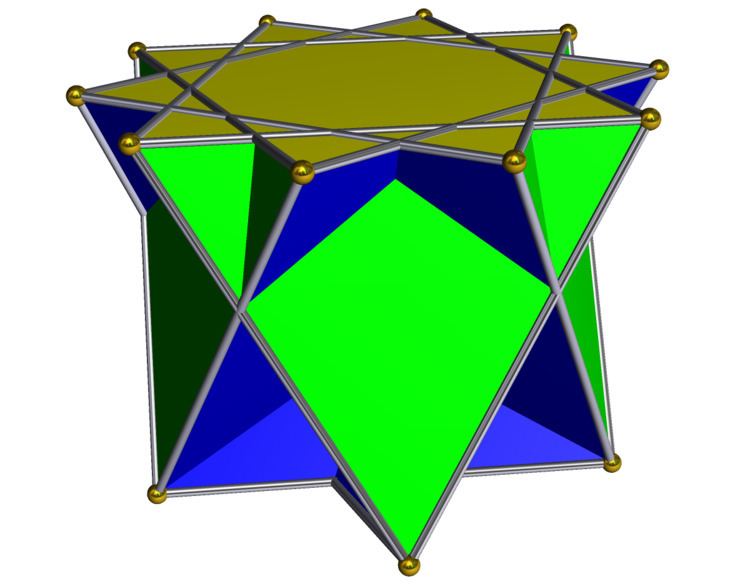Edges 25 Schläfli symbol {5/3} || t{5/3} | Vertices 15 | |
 | ||
Type Johnson isomorph
Cupola Faces 5 triangles
5 squares
1 pentagram
1 decagram Vertex configuration 5+5(3.4.10/3)
5(3.4.5/3.4) | ||
In geometry, the crossed pentagrammic cupola is one of the nonconvex Johnson solid isomorphs, being topologically identical to the convex pentagonal cupola. It can be obtained as a slice of the great rhombicosidodecahedron or quasirhombicosidodecahedron. As in all cupolae, the base polygon has twice as many edges and vertices as the top; in this case the base polygon is a decagram.
Contents
It may be seen as a cupola with a retrograde pentagrammic base, so that the squares and triangles connect across the bases in the opposite way to the pentagrammic cuploid, hence intersecting each other more deeply.
Related polyhedra
The crossed pentagonal cupola may be seen as a part of the uniform polyhedra known as the nonconvex great rhombicosidodecahedron, great dodecicosidodecahedron, and great rhombidodecahedron.
Various crossed pentagrammic cupolae on the nonconvex great rhombicosidodecahedron may be diminished or gyrated (rotated) to produce a set of 12 polyhedra isomorphic to the Johnson solids J72 to J83. They are the gyrate, metabigyrate, parabigyrate, trigyrate, diminished, metabidiminished, parabidiminished, tridiminished, metagyrate diminished, paragyrate diminished, bigyrate diminished, and gyrate bidiminished quasirhombicosidodecahedra.
Dual polyhedron
The dual of the crossed pentagrammic cupola has 10 triangular and 5 kite faces:
